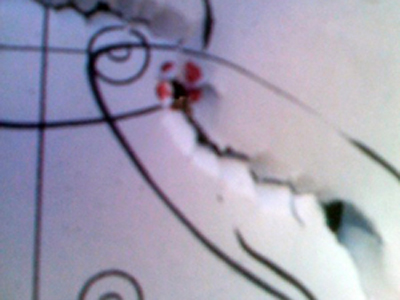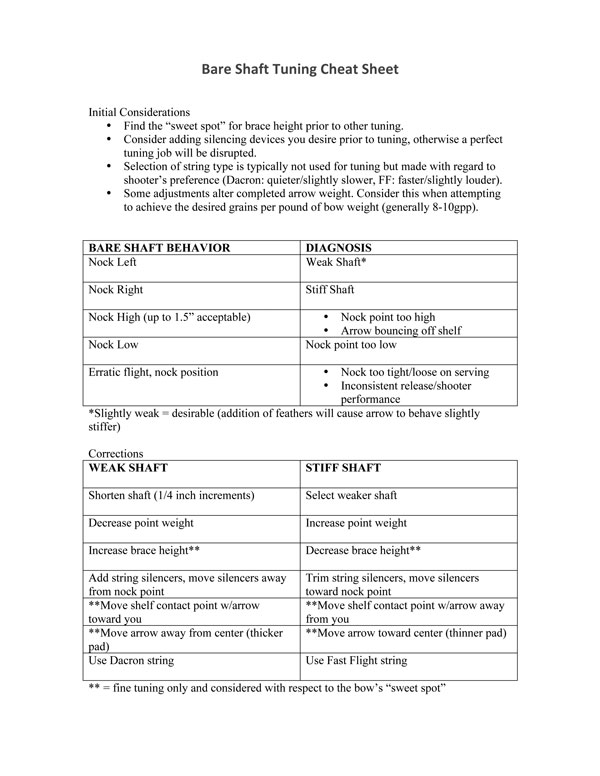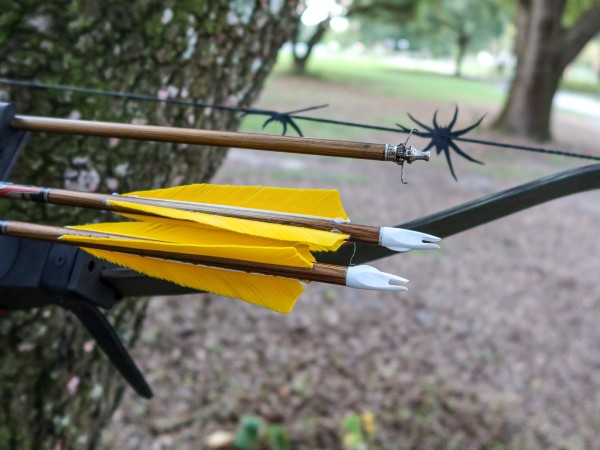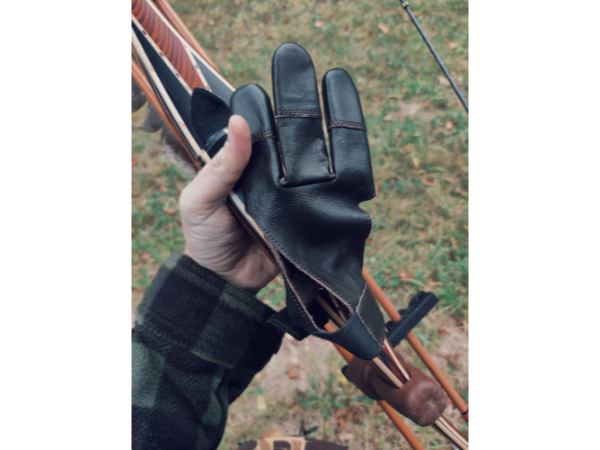When paper tuning bare shafts to correct arrow flight, you need to know the direction the nock end of the shaft is pointing relative to the hole made by the point. If the nock end does not penetrate the paper in tandem with the point, the hole will be an elongated tear extending left, right, high or low in the direction of the nock’s entrance from that of the point. However, I had difficulty distinguishing which end of the tear was made by the field point and which end was made by the nock. To solve that problem, I apply lipstick to the field point. It will leave a mark on the point end of the tear, which tells me that the other end of the tear was made by the nock. I can then make adjustments accordingly. If there is no deviation between the nock’s entrance and the point’s, all is well.
Another tip: For paper tuning, get large sheets of blueprint paper from contractors who are throwing them out. Be sure to secure the paper tightly across a frame or an empty cardboard box so that the arrow cleanly penetrates the paper.
Matt Green’s article, Tuning 101, included this great Bare Shaft Tuning Cheat Sheet.








I just tuned a bow yesterday and for the nock it was opposite, bare shaft . My arrow was low so i dropped the nock point down and it brought the bare shaft up even with the others after a few changes . ?
Good stuff. Have to go to T.J.’s handbook every time I fine tune. That cheat-sheet will be handy. Thanks for sharing.
Everyone keep tabs on one clown trying to pass X-bows in Mn. Will know by Monday if it goes thur to the MDHA. Then the fight begins!!
Theses comments come late to the bare shaft article but as we are now finally off to Africa (for a 2 fold purpose, 1 of which is a Zimbabwe Safari with my trad bow to the Save Conservancy!) I have the time to respond. The logistics of getting ready were very time consuming. First thanks for the article and especially the \”how to correct\” chart. A bit about my own experience – my Douglas Fir footed with Purple Heart arrows spines 65ish were marking the arrow rest to soon and not in it\’s centre. I was told (incorrectly as I later found out) that my spine was to stiff. So with a set of DougFir bare shafts from Surewood spined 55-65 for my 52# Cari-bow Tuktu Ex I fired away at a target bag (a weaved mesh bag stuffed with plastic shopping bags). From 8 yards the arrows consistently entered nock left but with fletched shafts the arrows entered straight! I saw the value of feathers to correct arrows in flight however I believed that showed there was an energy loss in the correction. From the advice given I couldn\’t understand why they weren\’t entering straight. So wanting to solve the riddle I dug out arrows spined 70 to 80, stripped off their feathers and commenced flinging. The 70\’s showed no improvement however the 80 shaft entered straight. Now that was a beautiful sight, viola! To play a little more, to that shaft I added a100 grain Woody Weight and again, nock left. So now with the correctly spined arrows 80-85, Chartrused Doug Firs footed with Purple Heart and razor sharp Zephyr broadheads I\’m confident of the combination should my quarry present itself with the opportunity to to release such. All the best to you my fellow trades.
I haven’t had a problem identifying which is point end and which is nock end. But your lipstick idea sounds great! I will use it. When I paper tune, I fletch a bare shaft. Then I use a utility knife to carefully cut off the feathers leaving only the quills attaches to the shaft. Sometimes I crest my arrows with paint, sometimes I roll-on self-stick crests. In either case, I apply the quills to whatever cresting (or not) I am using for paper tuning. I fletch/tune with the hen feather out, so I set the nock accordingly. I do this to try to simulate, as best I can, how the feathers will react with to incidental contact with the riser face or shelf and also to approximate the stiffness of a fully fetched arrow. When I paper tune, ideally, I look to get the nock end ever so slightly high and to the left of the point of impact (I’m right-handed) . The little additional weight (approx. 8 grams) of the full feathers on the finished arrow, stiffens it just enough to eliminate the slightly high left attitude. To be sure things are in order, I then shoot the arrows at a bale from 15-20 yards.